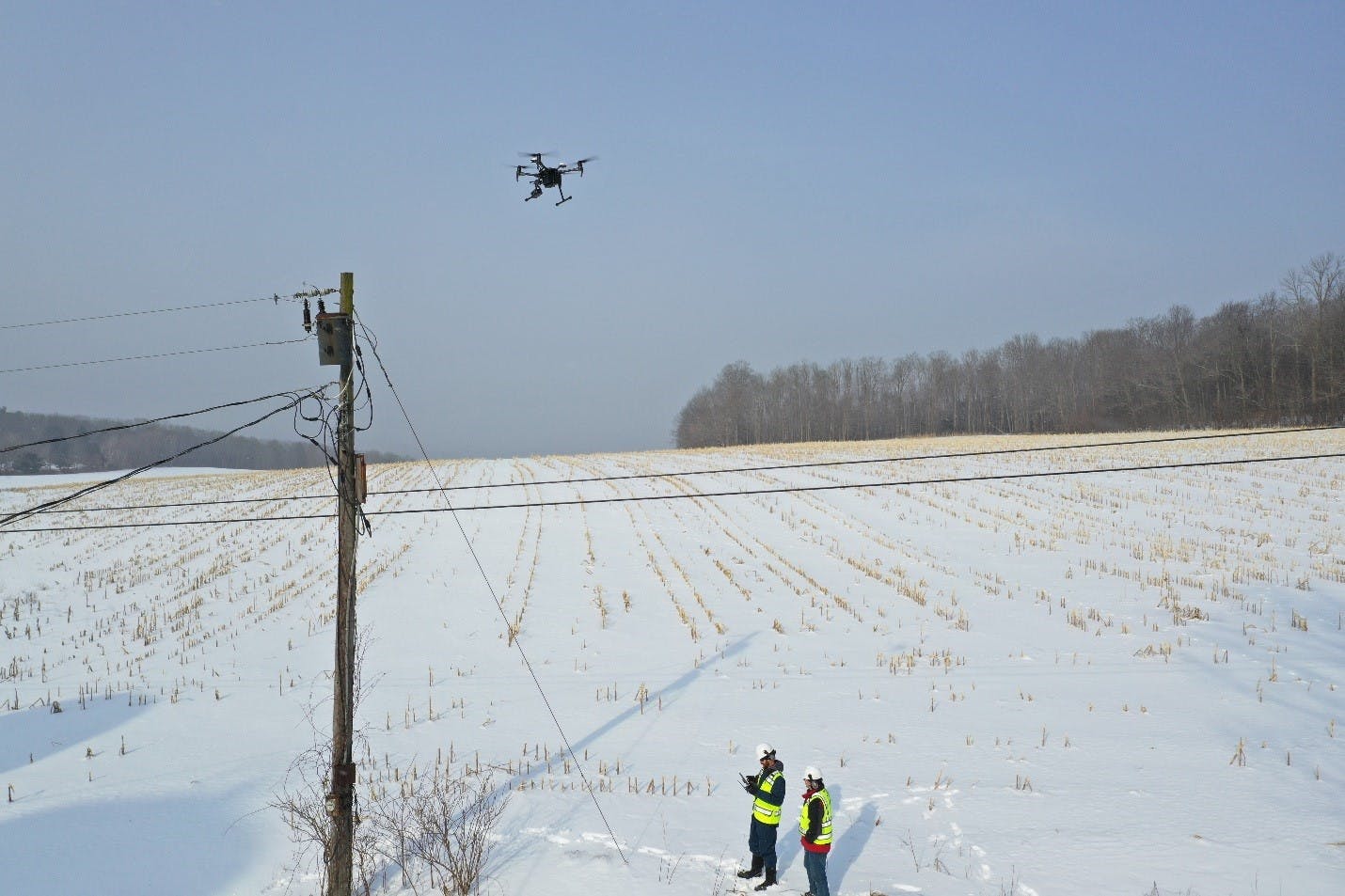Constellation Clearsight, BGE, ACE, and PEPCO Double Down on Critical Feeder Inspections.
Baltimore Gas and Electric (BGE), Atlantic City Electric (ACE), and Potomac Electric Power Company (PEPCO) were among many utilities that doubled down with Exelon Clearsight to maintain the reliability of their critical feeders during the COVID-19 pandemic. Each of these utilities is trusted to provide uninterrupted electric service to hospitals and other essential service facilities in its territory. This means potential issues must be addressed and fixed immediately to mitigate the probability of outages, which would have cascading effects on the communities they serve.
Inspections within the FRZ
When it comes to large investor-owned utilities, their service territory is commonly centered around a large city with many miles of lines sprawling out into the neighboring counties. BGE encompasses all of Baltimore and much of the surrounding northeast region of Maryland. ACE covers nearly half of New Jersey on the southern end of the state. While PEPCO manages the Washington, D.C. metro area.
These large swaths of service territory mean their lines traverse through many different classes of airspace and require special authorization to operate drones. PEPCO’s territory includes the Washington, D.C. Flight Restricted Zone (FRZ), an approximate 15-mile radius surrounding the White House where only government and commercial aircraft are permitted to fly.

The scope of our inspection project for PEPCO utilities included more than 1,100 distribution facilities within five miles of the White House inside the FRZ. In order to fly these lines, we had to obtain waivers from the Federal Aviation Administration (FAA), as well as the Transportation Security Administration (TSA); a process consisting of background checks on each of our Part 107 UAS operators and extensive vetting of our company’s safety record and procedures. Because of our strong track record and reputable references, our waiver request was approved on the first submission.
UAS operations in the FRZ aren’t as straightforward as standard operations. We were required to submit flight plans 24 hours in advance and then notify the FAA one hour prior to launch with mandatory check-ins every two hours throughout each workday. In less than six weeks, our team completed inspections of more than 20,000 facilities spanning more than 600 miles of service territory.
The findings and our key insights helped BGE, ACE, and PEPCO prioritize remediation of damaged equipment and harden their critical lines that supply power to the essential services in their communities. In addition, our successful and safe flight missions provided vital data to the FAA and TSA that will help foster innovation and the use of UAS technology in our nation’s most protected areas.
Related Content

Our Exclusive Webinar with Roy Palk on Increasing Demand and Electrification Planning is Now Live!
Listen to Roy Palk, an industry leader with over 50 years of experience, discuss the future of the nation’s grid and how planning is crucial for cooperatives.

4 Practices for Preventing Utility Equipment Failures
Practices to prevent utility equipment failures. Asset inventory, inspections, data-driven decisions, industry collaboration – find tips on management plans here.

